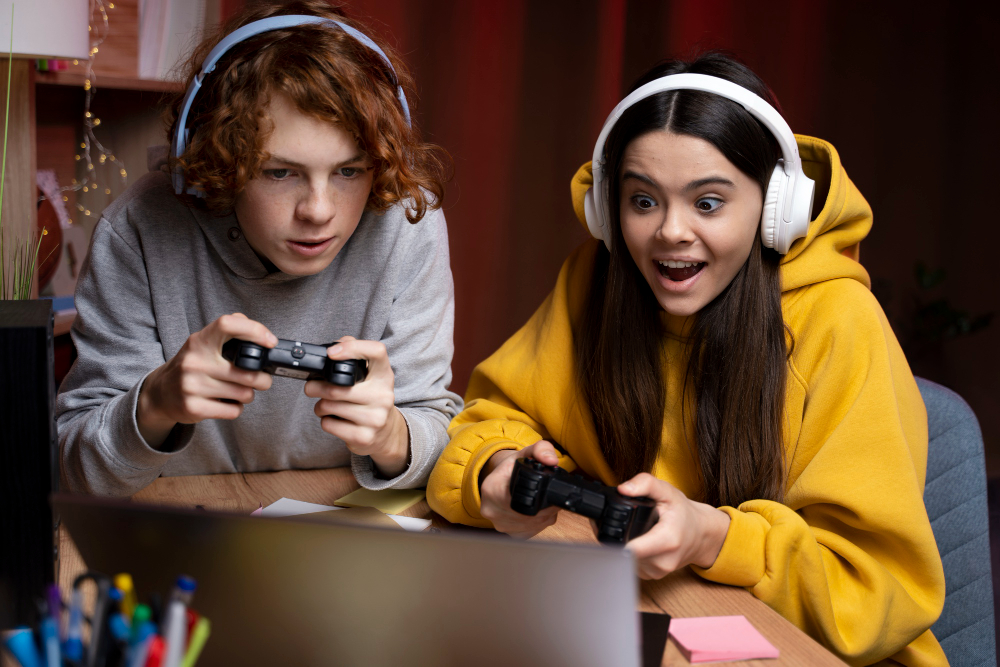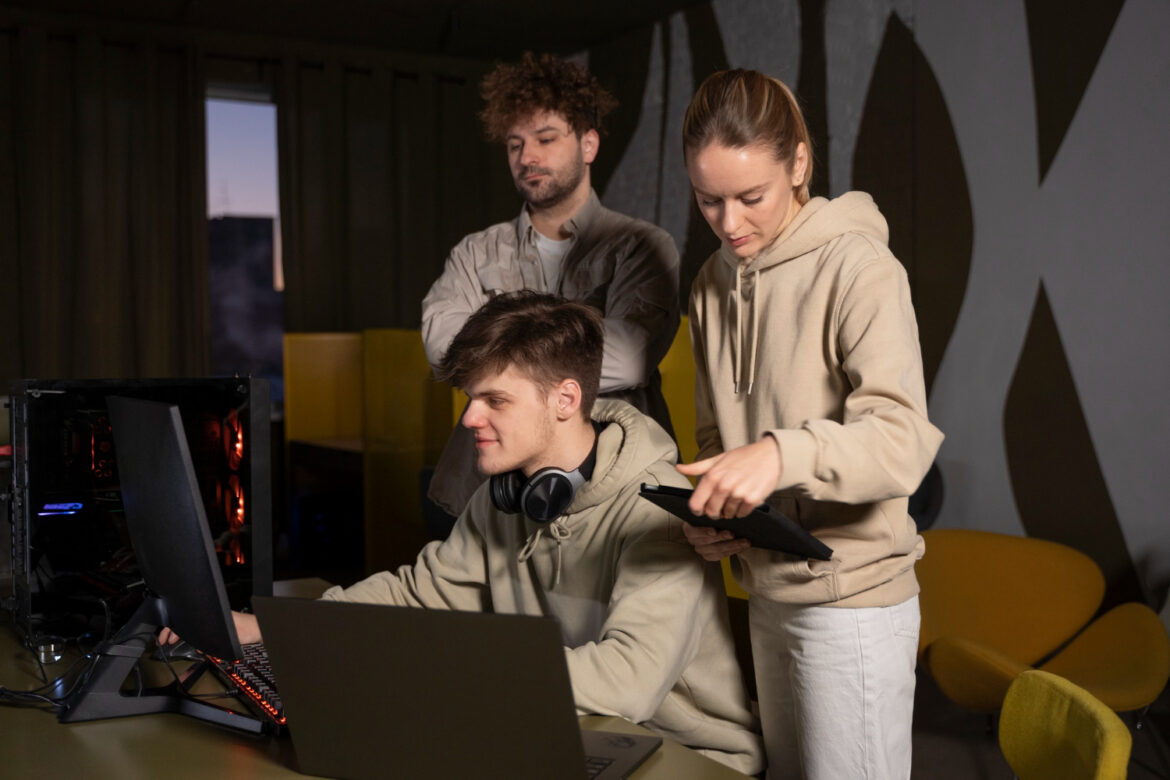Games ProgramGeeks captures a mindful, skill-first approach to gaming that blends enjoyment with measurable cognitive benefits. When play is structured, intentional, and gently progressive, it can sharpen attention, bolster working memory, speed up decision-making, and lift mood—all while keeping the fun intact. This guide dives into what gameplay really means, how to begin with esports safely and effectively, and how to build a week of sessions that supports brain health without sacrificing balance.
Why Brain Health Matters
Cognitive fitness underpins everyday life: staying focused in meetings, switching tasks smoothly, remembering names, and making clear decisions under pressure. Just as muscles respond to resistance, the brain responds to repeated, well-designed challenges. Games provide immediate feedback, adjustable difficulty, and varied problem-solving contexts—three ingredients known to support learning and neuroplasticity. The key is choosing the right types of play, for the right amount of time, with thoughtful progression.
What Is Gameplay
Gameplay is the heart of a video game: the rules, actions, goals, and feedback loops that shape how you interact and improve. It includes mechanics (the actions you can take), dynamics (how the game systems respond), objectives (what success looks like), constraints (what makes choices meaningful), and progression (how challenge ramps up). In a puzzle game, gameplay might be pattern recognition and logic under time pressure. In a platformer, it’s timing, movement precision, and spatial planning. In a strategy title, it’s resource management, forecasting, and risk control. Good gameplay teaches you through doing, shows you mistakes quickly, and rewards smarter decisions—not just faster fingers.
How Games Support Cognition
Different genres recruit different mental systems, and variety matters. Action and shooter games can stress selective attention, visual search, and reaction time. Strategy and tactics emphasize planning, working memory, and flexible thinking. Puzzles challenge pattern recognition and inhibition—knowing when to pause and re-evaluate. Rhythm and timing games train temporal precision and sensorimotor coordination. Rotating among genres helps you avoid plateaus and spreads the training effect across multiple skills.
The Science, Briefly
A growing body of research in cognitive psychology and neuroscience suggests that certain game types can improve specific skills, such as visual attention, task switching, and processing speed. Studies point to near transfer—improvements on tasks similar to what you practice—being more reliable than far transfer, where gains jump to unrelated real-world tasks. This means expectations should be grounded: consistent, targeted play can refine attention, memory, and decision-making in contexts that resemble the game’s demands. The most reliable gains appear when play is focused, sessions are time-limited, and challenges incrementally increase. Sleep, physical activity, and stress management amplify the benefits by supporting consolidation and recovery.
What Is Gameplay in Video Games
When you ask “what is gameplay in video games,” you’re asking how the player’s choices produce outcomes. Strong gameplay offers clear goals, readable feedback, fair rules, escalating challenges, and meaningful trade-offs. Mechanics like movement, aiming, combo systems, resource economies, and cooldowns create the canvas. Dynamics—enemy behaviors, map rotations, physics—bring it to life. The experience becomes a dialogue between intention and consequence. If you can articulate the core loop—learn, attempt, receive feedback, adjust—you can practice more deliberately and improve faster.
How To Play Esports Games
Starting esports can feel overwhelming, but a simple structure removes the guesswork. First, choose one title and stick with it long enough to learn maps, roles, and vocabulary. Calibrate settings for comfort: field of view, sensitivity, keybinds, audio cues. Learn the fundamentals: movement, positioning, economy or cooldown management, and objective prioritization. Build a practice block: five minutes of warm-up drills, fifteen minutes of focused mechanics (aim trainers, movement routes, last-hitting or resource cycles), ten minutes of game sense (VOD review, map study, callout memorization), then scrimmage or ranked matches with a single goal for the session. Communicate clearly, keep comms concise, and review one highlight and one mistake afterward. Protect health with wrist warm-ups, posture checks, hydration, and regular breaks. Progression looks like climbing ranked ladders, joining amateur tournaments, or finding a team—always balancing intensity with recovery.
Attention And Focus
Structured play can improve selective and sustained attention. Fast visual environments teach you to filter noise and prioritize signals. To cultivate focus, set a clear intention before each session—track heads-up display elements, pre-aim angles, or minimize unnecessary camera movement. Use short, intense bouts followed by brief rests; attention quality drops in marathons. Over time, you’ll notice better scan routines, quicker threat identification, and more consistent tracking on relevant cues.
Working Memory And Flexibility
Games that require holding objectives, tracking enemy cooldowns, or juggling resource states exercise working memory and cognitive flexibility. Strategy and MOBA titles are especially effective here. To train deliberately, verbalize or write mini-checklists: current objective, enemy power spikes, your next two actions. Practice flexible shifts: if plan A fails, pivot quickly to plan B without emotional tilt. Reviewing short clips to identify the moment a plan became outdated accelerates learning.
Speed And Decision-Making
Processing speed and choice under uncertainty improve with structured repetition and varied scenarios. Use drills that alternate predictable and unpredictable stimuli to train both reflexes and judgment. In shooters, switch between static targets and reactive snapshots; in strategy, alternate between scripted builds and adaptive responses. Record average time to first meaningful decision in a round or match, then work to reduce hesitation while keeping error rates acceptable. Speed gains should not sacrifice clarity; the goal is fast, informed choice.
Mood And Stress
Gaming can restore mood through competence, autonomy, and relatedness. Short, winnable challenges ease mental load and create momentum. Social play can buffer stress if communication is respectful and goals are shared. To keep play restorative, set a stop time, end on a successful micro-goal, and avoid chasing losses. On tougher days, pivot to puzzle or rhythm games that calm rather than escalate arousal. Your brain learns best in a manageable zone of challenge.
Choosing ProgramGeeks Games
Pick titles that match your goals and let you dial difficulty. For attention and tracking, action-lite shooters or arcade racers with adjustable speed are useful. For memory and planning, tactics and base-building games with clear economies work well. For timing and coordination, rhythm and platformers shine. Look for training modes, custom lobbies, and accessibility options like color-blind filters, remappable keys, aim assist, and scalable text. Favor games that surface stats or allow third-party stat tracking so you can measure progress.
How To Build A Weekly Plan
A simple ProgramGeeks week blends variety with focus. Try three to five short sessions, each 25–40 minutes. Begin with a five-minute warm-up: wrist and finger mobility, then a gentle drill. The focus block runs 15–20 minutes on one skill target. Finish with five minutes of cooldown: notes on what worked, one fix for next time, and a short stretch. Rotate genres across the week: puzzle on Monday, tactics on Wednesday, action on Friday, rhythm on Sunday. Nudge difficulty upward when you hit an 80–90% success rate, or add constraints like limited UI cues or narrower fields of view during drills.
Sample Sets
Beginner-friendly set: calming puzzles for pattern recognition, a low-stress rhythm game for timing, and a casual strategy title to practice planning. Intermediate set: timed puzzles that press working memory, an action-lite shooter with aim drills, and a tactical RPG focusing on resource trade-offs. Advanced set: a fast-paced FPS with recoil control and movement routes, a MOBA with role-specific communication goals, and a high-APM strategy game for multitasking under pressure. The aim is not prestige but deliberate, measurable practice.

Tech And Ergonomics
Comfort supports performance and longevity. Choose an input device that fits your hand size; adjust sensitivity to reduce over-gripping. Keep wrists neutral, shoulders relaxed, feet grounded. Use a stable frame rate and low-latency display settings; consistent performance reduces cognitive load. Set audio so critical cues stand out without being harsh. Keep your space lit to lower eye strain and follow a 20-20-20 rule: every 20 minutes, look 20 feet away for 20 seconds. Small habits here prevent setbacks.
Mindful Play
Intent beats hours. Before a session, write one objective: pre-aim angles, economy tracking, rhythm accuracy, or puzzle error reduction. Use a timer. If stress spikes, pause and reset rather than grinding through tilt. Afterward, note one strength and one tweak. Balance screen time with a brief walk or mobility routine. The brain needs contrast—movement, daylight, and silence—to consolidate learning.
Common Pitfalls
Marathon sessions feel productive but degrade attention and reinforce sloppy patterns. Jumping between games too quickly prevents depth. Ignoring fundamentals—movement, positioning, resource timing—locks you in a plateau. Skipping review wastes experience; a two-minute clip can reveal patterns invisible in the moment. Neglecting sleep, nutrition, and hydration dulls adaptation. Set boundaries, and let consistency, not volume, drive progress.
How To Play Esports Games, Step By Step
- Pick one title and one role for 30 days. Depth first, breadth later.
- Tune settings once, then stop tinkering. Consistency breeds skill.
- Warm up with mobility, then a micro-drill that targets your session goal.
- Enter matches with a single focus metric: crosshair placement, last-hit rate, ultimate economy, or rotation timing.
- Communicate simply: call objective, location, status, and next action.
- Review one moment post-match: identify cue, decision, outcome, and a better option.
- Schedule days off. Skills grow during rest as much as during reps.
FAQs
Can games really improve brain health?
Yes, for specific skills like attention, working memory, and processing speed, especially with focused, progressive practice.
How long should I play?
Short, high-quality sessions of 25–40 minutes, three to five times weekly, outperform long, unfocused marathons.
What’s the difference between gameplay and graphics?
Graphics are presentation; gameplay is the interactive system of goals, actions, and feedback that drives learning.
How do I start esports without overwhelm?
Narrow to one title and role, set a weekly plan, and measure one skill at a time.
Are violent games required for attention gains?
No; action elements can help attention, but many nonviolent games train similar skills through pace, multitasking, and precision.
Key Takeaways
- Games ProgramGeeks is about intentional, skill-first play that trains attention, memory, decision speed, and mood.
- Gameplay equals mechanics plus goals plus feedback; understanding the loop lets you practice smarter.
- Esports success blends fundamentals, structured drills, clear communication, and real recovery.
- Short, focused sessions with gradual difficulty beat long grinds, and variety across genres broadens cognitive benefits.
- Health habits—sleep, movement, ergonomics—turn practice into lasting gains.
Sources
This article draws on insights from cognitive psychology, learning science, and esports performance research, including work on attention and visual processing in action games, skill acquisition through deliberate practice, motor learning principles, sleep and consolidation effects on memory, and ergonomics guidance for reducing musculoskeletal strain during computer use.
